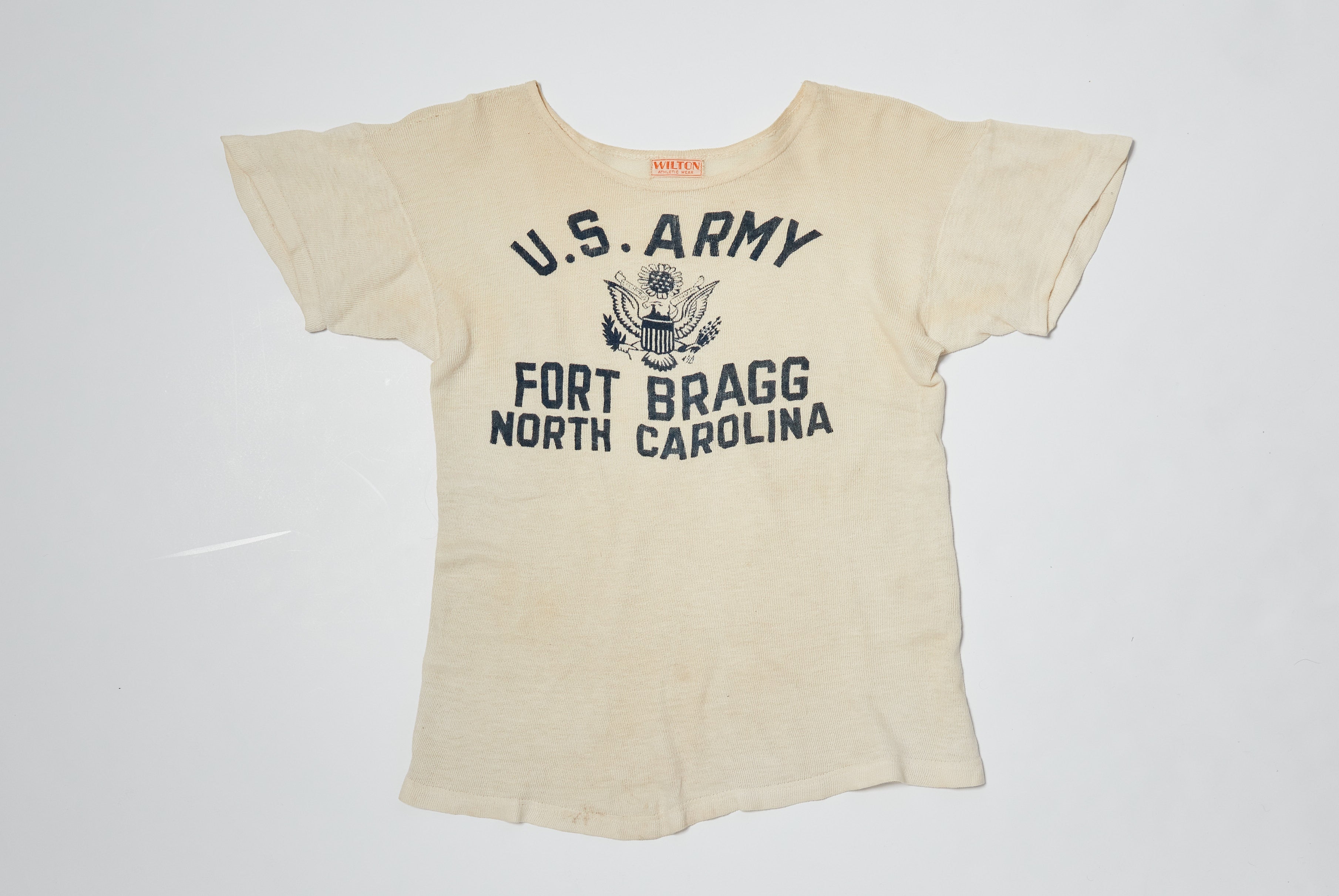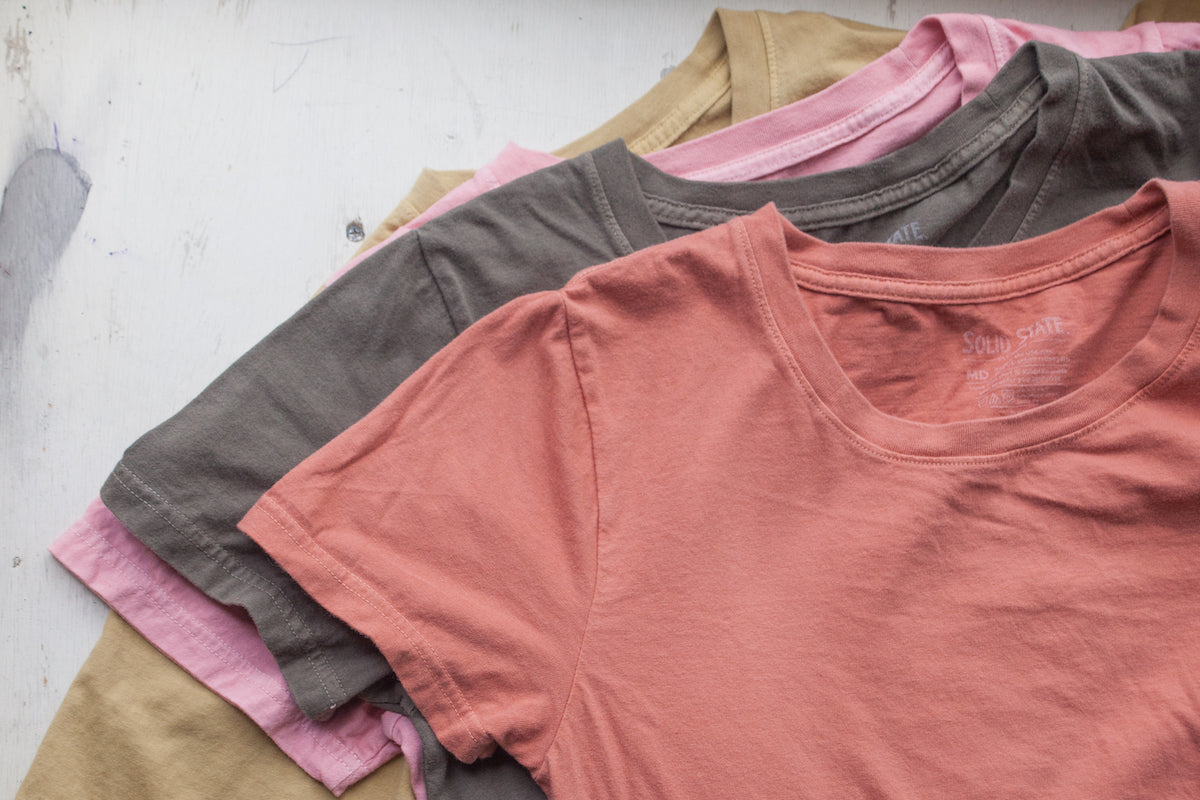
Two NC Vintage Clothing Experts Tell the History of the T-Shirt
“Knowing where the things that you put on your body every day come from is of equal importance to knowing where the food you put in your body comes from.” - Evan Morrison, Hudson’s Hill, Greensboro, NC
Next time you wear your favorite t-shirt, take a peek inside the collar and see where it’s made and what it’s made of. We recently chatted with Evan Morrison and Greg Redelico, both of Greensboro, NC, and both in the vintage clothing industry — particularly, denim. They’re experts on all things local and believe conscious consumers should consider where and how clothes are made before buying into a brand. When we sat down to chat, we talked t-shirts.
Where T-Shirts Come From
Did you know that the t-shirt got it’s start during World War I? A company named Stedman that was in Asheboro, NC — just 35 miles southwest of our Burlington, NC headquarters — secured the first contract to make a basic white undershirt for the US Navy.
That the t-shirt had its debut in the military is not unusual. “A variety of staple clothing articles have their origin story in the military,” says Morrison.
The term ‘t-shirt’ was first used by F. Scott Fitzgerald. “In the 1920s, he wrote in a book about heading off to prep school in New England,” Morrison explains, “and among the garments being packed to take to school was a t-shirt. That was the first time that word was used.”

“The ‘t’ in t-shirt comes from the shape,” he adds. “In the olden days, it was more about range of motion than a contoured fit, and the earliest t-shirt was a union suit — a basic onesie. It was likely made out of wool or cotton, or a blend of the two; and the bottom was cut off, so it likely had buttons all the way down the front and a frayed bottom — unless someone had a home sewing machine and sewed the front closed.“
How T-Shirts Have Evolved Through the Years
“Within the 1920s through I would say the 1960s or 70s, you can really see a lot of varied construction techniques as well as very unique details that have kind of gotten lost through the years.” - Evan Morrison, Hudson’s Hill
As the world has changed over time, so have t-shirts. “In the 1940s, they had a militaristic and athletic cut, because the t-shirt’s purpose was functionality,” says Redelico. “In the 50s or 60s and 70s, you started seeing counterculture — the cut of the t-shirt and the type of graphics people were putting on them changed. Over time, it became like a walking billboard for what you wanted to be. And it still is…”

“In the earliest days, a t-shirt used a tubular body that formed a T shape when it was flat,” Morrison adds. “It really lacked what the fashion world calls ‘fit’… With modern t-shirts, the sleeves slope downward, and that reduces the amount of fabric manufacturers use and creates a more aesthetically pleasing fit.”
Why It’s Important To Consider Where Your T-Shirts Are Made
Here at Solid State Clothing, our commitment to radical transparency led us to create a system that lets us track a t-shirt all along the supply chain — from dirt to shirt, as we like to say.
Morrison and Redelico are committed to that same kind of transparency. “For a while now, I've said we've had a conscious consumer movement ongoing within our country,” says Morrison. “People like to buy home appliances and electronics labeled with the Energy Star; vehicles that can use flex fuel or have hybrid technology or even an EV battery; food that has a purple sticker that says ‘USDA Organic.’ But most haven't really migrated in that same path in their clothing preferences.”

“It’s really a matter of educating people to let them know they can check and see what the fiber content of a garment is. When someone comes into Hudson’s Hill [our retail location in Greensboro], our goal isn't that they leave with something. It’s that they leave with knowledge about what clothes are made of and where they’re made… because you can no longer unsee what you’ve seen.”
Hudson’s Hill, by the way, is a Made in USA general store that only sells items made with thoughtful manufacturing processes in the US. A lot of the products are actually made by Morrison and Redelico. Shirts made in the US often have a higher price tag, but Redelico says quality matters more. “Some people will buy $20 jeans their whole life, and then get that one $300 pair of jeans, and it changes them. They get rid of all the others and use that one pair, realizing that was all they ever needed. With t-shirts, it's the same thing. If you spend $48 on a ‘dirt to shirt,’ all USA organic cotton, all the bells and whistles, that shirt will outlast more than 10 three-packs from Walmart…”
We happen to agree. Check out our own made in the USA, durably-constructed, long-lasting Solid State Clothing t-shirts. They're the best t-shirts you’ll ever wear.



